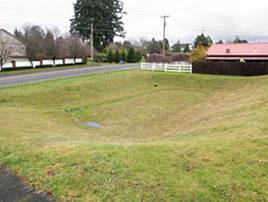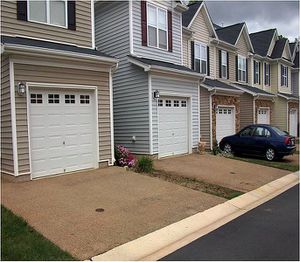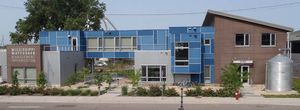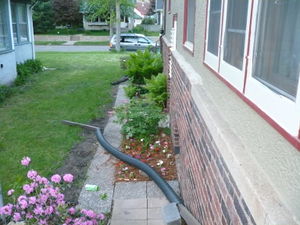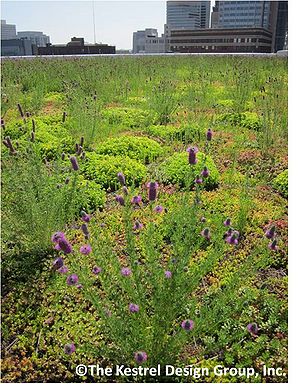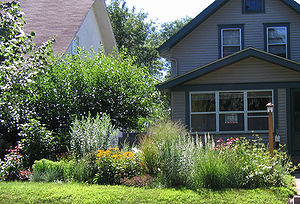
Difference between revisions of "Overview of Green Infrastructure and Low Impact Development"
m |
m |
||
| Line 35: | Line 35: | ||
The above list of practices include individual stormwater control practices, typically designed to capture runoff from a defined impervious area called a contributing area. More generalized practices include urban forestry and land conservation or preservation. These practices are applied across larger landscapes and are typically incorporated into the urban landscape rather than treating runoff from a specific area. They are not specifically designed to retain or infiltrate water, but they perform these tasks by disconnecting impervious surfaces and using natural hydrologic features to slow or capture stormwater runoff. | The above list of practices include individual stormwater control practices, typically designed to capture runoff from a defined impervious area called a contributing area. More generalized practices include urban forestry and land conservation or preservation. These practices are applied across larger landscapes and are typically incorporated into the urban landscape rather than treating runoff from a specific area. They are not specifically designed to retain or infiltrate water, but they perform these tasks by disconnecting impervious surfaces and using natural hydrologic features to slow or capture stormwater runoff. | ||
| − | The individual practices listed above are often combined. Examples include green street, green alleys, and green parking, which typically utilize a combination of these practices. | + | The individual practices listed above are often combined. Examples include green street, green alleys, and green parking, which typically utilize a combination of these practices. An example is the Green Line light rail system in St. Paul, Minnesota, which includes permeable pavement, tree trenches, and bioinfiltration. |
| − | In addition to the links included above, the manual provides [https://stormwater.pca.state.mn.us/index.php/BMPs_for_stormwater_infiltration a page summarizing a variety of infiltration practices]. | + | In addition to the links included above, the manual provides [https://stormwater.pca.state.mn.us/index.php/BMPs_for_stormwater_infiltration a page summarizing a variety of infiltration practices]. That page includes information on a variety of characteristics for each infiltration practice, such as where the practice can be used and cost. |
==Non-stormwater impacts of green infrastructure== | ==Non-stormwater impacts of green infrastructure== | ||
Revision as of 12:51, 6 September 2017
This page is under construction
Green infrastructure is an approach to managing urban wet weather impacts that mimics, restores, or maintains natural hydrology. Green infrastructure includes a wide array of practices, including infiltrating, evapotranspiring, or harvesting and using stormwater. On a regional scale, green infrastructure is the preservation or restoration of natural landscape features, such as forests, floodplains and wetlands. On the local scale, green infrastructure consists of site and neighborhood-specific practices, such as bioretention, trees, green roofs, permeable pavements and cisterns. Regional and local practices are coupled with policies such as infill and redevelopment that reduce overall imperviousness in a watershed.
This page provides a summary of green infrastructure, including a discussion of urban hydrology and water quality, an overview of green infrastructure practices, and benefits of green infrastructure. Links to other pages in the manual are provided at the end of this article.
Urban hydrology and water quality
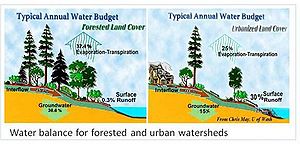
The section called Overview of basic stormwater concepts provides an in-depth discussion of urban stormwater, including it's effects on hydrology and water quality. In a forested watershed, the majority of precipitation infiltrates the soil and subsequently percolates deeper into groundwater or is evapotranspired back to the atmosphere. As urban development increases, the paving of pervious surfaces (that is, surfaces able to soak water into the ground) with impervious roads, shopping centers, driveways and rooftops means less water soaks into the ground and more water runs off. The result is increased runoff volumes, increased peak runoff discharges, greater runoff velocities, increased flooding, increased scouring of streams and streambanks, and less subsurface flow to streams (baseflow). These processes dramatically change the morphology and biology of urban stream systems, to a point where they often can no longer support a viable biologic assemblage.
Water quality is also impacted. The water that washes over these new urban surfaces picks up materials laying upon those surfaces. The sediment from construction erosion, the oil, grease and metals from many automobiles, the fertilizer and pesticides from lawns, and many more new pollutants can adversely impact the receiving waters. There are several nonpoint sources of pollution, each with a distinct set of pollutants of concern. See the section on Pollutant fate and transport in stormwater infiltration systems to learn more about the transport and fate of pollutants in urban stormwater runoff.
Green infrastructure stormwater practices
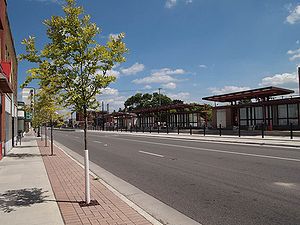
A fundamental component of green infrastructure is retaining precipitation near the location where it falls. This requires capturing and retaining the water and allowing it to infiltrate or be utilized by plants. Stormwater practices that achieve this are described below. For more in depth discussion of these practices, see the page titled Stormwater management and green infrastructure or link to the individual sections in the manual for each type of practice (see links below).
- Bioinfiltration, also called rain gardens. Bioinfiltration basins, often called rain gardens, use soil (typically engineered media or mixed soil) and native vegetation to capture runoff and remove pollutants. Both the media and underlying soil typically have high infiltration rates that allow captured water to infiltrate within a required drawdown time, usually 48 hours. Vegetation also takes up some of the captured water. For more information, link here.
- Infiltration practices. These practices include infiltration basins, infiltration trenches, dry wells, and underground infiltration systems. Infiltration basins, trenches, and dry wells are aboveground structures or impoundments that capture, temporarily store, and infiltrate stormwater runoff. Drawdown of this stored runoff occurs through infiltration into the surrounding naturally permeable soil. The required drawdown time is 48 hours or less. Underground infiltration systems often consist of pre-manufactured pipes, vaults, and modular structures. Underground systems are often used as alternatives to infiltration basins and trenches for space-limited sites and stormwater retrofit applications. Underground infiltration systems are occasionally the only stormwater BMP options on fully developed sites as they can be located under other land uses such as parking lots or play areas. Like aboveground practices, underground systems must drawdown captured water within 48 hours. For more information on infiltration practices, link here.
- Permeable pavement. Permeable pavements allow stormwater runoff to filter through surface voids into an underlying stone reservoir for temporary storage and/or infiltration. The most commonly used permeable pavement surfaces are pervious concrete, porous asphalt, and permeable interlocking concrete pavers (PICP). For more information, link here.
- Tree trenches and tree boxes. Tree trenches and tree boxes are engineered structural practices that behave similar to bioinfiltration practices. Water is captured and delivered to a storage area (engineered media), where the water can infiltrate and be taken up by trees. Like bioinfiltration practices, these practices are designed to drawdown the captured water within 48 hours of a precipitation event. Trees consume larger quantities of water than typical bioretention vegetation however. For more information, link here.
- Stormwater/rainwater harvest and use/reuse. A stormwater harvesting and use system is a constructed system that captures and retains stormwater for beneficial use at a different time or place than when or where the stormwater was generated. Typically the captured water is used for irrigation, meaning the water infiltrates soil and percolates to groundwater or is taken up by plants. Harvest systems may store water in cisterns or in constructed stormwater ponds. Some harvest systems are used to provide water for indoor uses, such as for toilet flushing. While this water is technically not retained on-site, it does reduce the amount of water delivered by the conventional water system. This provides a benefit by reducing the amount of treated water being consumed. For more information, link here.
- Stormwater disconnection. Impervious surface disconnection is the redirection of stormwater runoff from impervious surfaces (e.g., sidewalks, parking lots, rooftops, etc.) to vegetated areas instead of the runoff being discharged offsite via a storm sewer system or other conveyance methods. Redirection of impervious surface runoff to properly maintained vegetated areas promotes increased infiltration and reduces overall site runoff. The reduction in site runoff from impervious surface disconnection can vary considerably, depending on many factors, including the size of the contributing drainage area, size and infiltration capacity of the vegetated area receiving the additional stormwater, and numerous other site conditions such as slope and site grading. For more information, link here.
- Swales and filters strips. Swales are vegetated channels used primarily to transport runoff and filter sediment from the runoff. Although their primary effect is on removing pollutants associated with sediment, they can be designed to infiltrate water. Examples of such designs include the use of check dams, which store water in the swale and allow it to infiltrate, and incorporating a bioretention media into the design, which is a porous material that allows water to infiltrate. Filter strips act similar to disconnection practices discussed above. Water is routed from impervious surfaces to vegetated strips. Filter strips are primarily water quality practices since they are effective at removing sediment and associated pollutants, but if soils beneath the filter strip are porous or coarse-textured, some infiltration occurs. For more information, link here for swales or link here for filter strips.
- Green roofs. Green roofs consist of a series of layers that create an environment suitable for plant growth without damaging the underlying roof system. Green roofs create green space for public benefit, energy efficiency, and stormwater retention/ detention. Green roofs provide filtering of suspended solids and pollutants associated with those solids, although total suspended solid (TSS) concentrations from traditional roofs are generally low. Green roofs provide both volume and rate control, thus decreasing the stormwater volume being delivered to downstream Best Management Practices (BMPs). For more information, link here.
The above list of practices include individual stormwater control practices, typically designed to capture runoff from a defined impervious area called a contributing area. More generalized practices include urban forestry and land conservation or preservation. These practices are applied across larger landscapes and are typically incorporated into the urban landscape rather than treating runoff from a specific area. They are not specifically designed to retain or infiltrate water, but they perform these tasks by disconnecting impervious surfaces and using natural hydrologic features to slow or capture stormwater runoff.
The individual practices listed above are often combined. Examples include green street, green alleys, and green parking, which typically utilize a combination of these practices. An example is the Green Line light rail system in St. Paul, Minnesota, which includes permeable pavement, tree trenches, and bioinfiltration.
In addition to the links included above, the manual provides a page summarizing a variety of infiltration practices. That page includes information on a variety of characteristics for each infiltration practice, such as where the practice can be used and cost.
Non-stormwater impacts of green infrastructure
Since green infrastructure focuses on building within the natural environment, there are multiple impacts associated with implementation of green infrastructure practices. Some of those impacts are summarized below. For a more detailed discussion of each of these impacts, see the page called Non-stormwater effects of green infrastructure
- Health Benefits: More green space and parks encourage outdoor physical activity, reducing obesity and preventing associated chronic diseases, such as heart disease, high blood pressure, stroke, Type II diabetes, arthritis, and certain kinds of cancer.
- Urban Heat Island: Maximum air temperature for tree groves were found to be lower than that of open areas without trees. This is because of a process called evaporative cooling.
- Water Management: Urban forests help divert stormwater from water channels when trees intercept rainfall. Constructed wetlands slow the rate of runoff, help with fluctuating water levels, and retain pollutants in stormwater runoff.
- Air Pollution: Trees hold carbon, which improve air quality in cities.
- Property Values: Having more trees increases property value, which suggests that people value greenery and trees wherever they are. This implies that trees contribute to the preferred living conditions of people.
- Climate resiliency: Benefits include better management of storm-water runoff, lowered incidents of combined storm and sewer overflows (CSOs), water capture and conservation, flood prevention, storm-surge protection, defense against sea-level rise, accommodation of natural hazards (e.g., relocating out of floodplains)
- Habitat Improvement: Constructed wetlands and vegetation in the urban environment provides habitat for birds, mammals, amphibians, reptiles, and insects. By reducing erosion and sedimentation, green infrastructure also improves habitat in small streams and washes. Large-scale green infrastructure, such as parks and urban forests, help to facilitate wildlife movement and connect wildlife populations between habitats.
- Green Jobs: Green infrastructure can reduce a community’s infrastructure costs, promote economic growth, and create construction and maintenance jobs. As demand for green infrastructure skills increases, a range of new training and certification programs is emerging.
- Recreation Space: Vegetation and trees can increase publicly available recreation areas, allowing urban residents to enjoy greenery without leaving the city. Additionally, vegetation and permeable pavements can reduce noise pollution by damping traffic, train, and plane noise.

